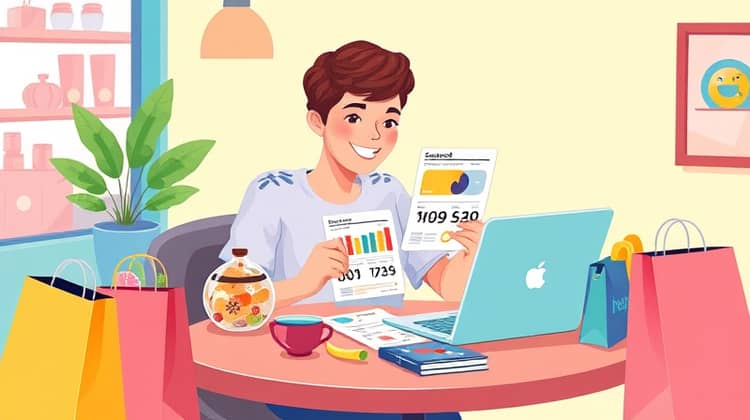Secrets of Credit Card Minimum Payments: Maximize Your Money Management

Credit cards can be a double-edged sword. On one hand, they offer convenience and the ability to make purchases without immediate cash availability. On the other hand, if not managed correctly, they can lead to a cycle of debt and financial instability. Understanding how minimum payments work is crucial for proper money management. In this article, we will explore the intricacies of minimum payments and offer strategies to help you maintain control over your finances.
Minimum payments often lead many cardholders into a false sense of security, believing they are maintaining their balances responsibly. However, this is not the case, and creditors know how to make the most of this by charging interest rates that can significantly grow unpaid balances. By the end of this discussion, you’ll gain insights into how to navigate through credit management effectively and ensure a healthier financial future.
Let's dive into the secrets of credit card minimum payments and learn how to maximize your money management to position yourself better for financial success.
Understanding Minimum Payments

Minimum payments are the smallest amounts you can pay towards your credit card bill without facing penalties. This amount varies depending on your card issuer's terms, credit card balance, and payment history. Generally, minimum payments range from 1% to 3% of the balance, plus any interest and fees.
Many consumers are unaware that only paying the minimum amount due can lead to prolonged debt periods. The longer you take to pay off your outstanding balance, the more you are liable to pay in interest over time. This mismatch between what seems like an affordable payment and the eventual cost can be misleading.
Understanding the ins and outs of minimum payments can aid consumers in avoiding common pitfalls and empower them to make informed decisions regarding their financial health. The more aware you are of your financial obligations, the better equipped you will be to manage and eliminate debt.
The Mechanism Behind Minimum Payments

The mechanics of credit card minimum payments are deceptively simple. Credit card companies typically require you to pay either a fixed dollar amount or a percentage of your unpaid balance, whichever is greater. This means if you carry a balance, that minimum payment can fluctuate based on your spending habits and any accrued interest.
Due to the compounding interest model utilized by credit card companies, failing to pay more than the minimum can lead to spiraling debt. It often results in cardholders feeling trapped in a cycle of making just enough payments to keep their accounts active but not enough to actually reduce their balances.
- Understand the balance: Monitor your outstanding balances and how they relate to your credit limits.
- Create a budget: Allocate funds specifically for credit card repayments to avoid relying on minimum payments.
- Increase your payments: Whenever possible, pay more than the minimum to reduce debt faster. Note how additional payments significantly decrease your interest over time.
In summary, it's essential to grasp how minimum payments work and how they can affect your overall financial health. By being proactive, cardholders can avoid pitfalls and promote better financial habits.
The High Cost of Paying the Minimum

One of the most costly aspects of only paying the minimum on credit cards is the potential for accruing high-interest payments. Credit cards typically carry interest rates ranging from 15% to 25%, which, when compounded over time, can result in significant costs.
For example, if you owe $5,000 on a credit card with a 20% interest rate and only make the minimum payment of $100 each month, it will take you over eight years to pay off the balance and you will have paid more than $3,000 in interest alone. Thus, while the minimum payment appears small, it becomes a trap.
In many ways, this strategy rewards cardholders who only meet minimum payments, by prolonging the repayment period, thus generating continual interest fees.
Impact on Credit Scores

The impact of paying only the minimum also extends to credit scores, which play a vital role in determining your creditworthiness. Credit scores are calculated based on several factors, including payment history and credit utilization ratios, both of which can be adversely affected by habitually making minimum payments.
When cardholders maintain high balances relative to their credit limits and consistently make minimal payments, their credit utilization ratio increases. A high utilization ratio can negatively impact credit scores, which can affect loan approval chances and interest rates for future borrowing.
Ultimately, responsible credit management that includes consistent above-minimum payments supports healthier credit scores, favorable lending terms, and overall financial wellness.
Strategies for Effective Money Management

To enhance your approach to managing credit card payments, it's crucial to develop sound financial strategies that minimize reliance on minimum payments. By adopting proactive financial habits, cardholders can improve their overall financial situation and avoid falling into debt traps.
Some strategies to consider could include actively budgeting for credit card payments, setting aside additional funds whenever possible, and focusing on paying off higher interest debts first.
- Assess your spending habits: Regularly review your expenditures to identify areas where you can cut back and increase your payment amounts.
- Establish an emergency fund: Saving for unexpected expenses can help you avoid increasing credit card debt during emergencies.
- Automate payments: Set up automatic payments for more than the minimum to ensure you're consistently reducing your balance.
With careful planning, individuals can take control of their credit card usage and repayment strategies, ultimately leading to greater financial stability.
Making the Most of Your Credit Card

Credit cards, when used wisely, can be a powerful financial tool. Making the most of your credit card means understanding both its benefits and the responsibilities that come with it. Utilize it to build rewards and establish a positive credit history, but do so with a keen awareness of your financial situation.
Monitor your spending and aim to repay full balances every month whenever possible. This allows you to avoid interest fees and maintain a positive credit utilization rate.
- Track rewards benefits: Take advantage of cashback and points programs offered by many credit cards for your purchases.
- Employ credit cards strategically: Use them for expenses you can afford to pay off immediately.
- Review terms regularly: Ensure you understand your credit card interest rates, fees, and potential changes.
By employing these strategies, you can maximize the benefits of your credit card while minimizing potential debt pitfalls.
Conclusion

In conclusion, while credit cards offer versatility and financial flexibility, relying on minimum payments can lead to financial challenges over time. Therefore, being aware of how minimum payments function and their long-term effects is essential for managing your financial health effectively.
Establishing thorough budgeting processes, being proactive with payments, and adopting strategic financial habits can transform your experience with credit cards from a burden into an asset.
Credit management isn't just about avoiding debt—it's about empowering yourself to make wise choices that can benefit your financial future.






